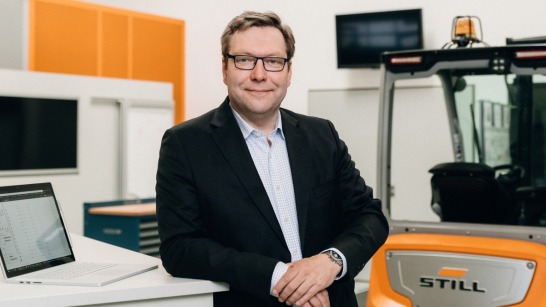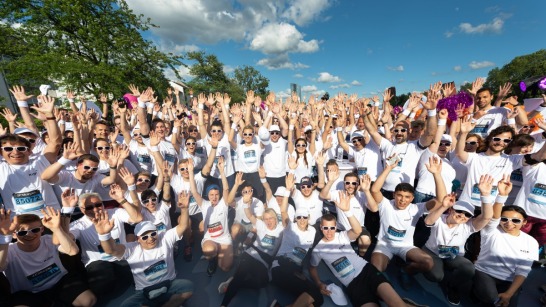Frank Spickermann first owned a computer back in 1980, a C64. Next came an ATARI and, at some point, a PC. He got into IT at an early age. The classic background for many people who later become IT developers. But today, Spickermann does not work at a software company. Instead, the route to his office takes him past a factory, in front of which are rows of trucks. He can hear the humming of the machines; the unique smell of electric welders hangs in the air. “Before I applied to KION in 2016, I had no idea about trucks,” says Spickermann. “I thought they were all pretty much the same.”
Three years later and Frank Spickermann knows a great deal more about trucks. Exaggerating slightly, he explains that, in the past, “the IT department received a request that the developers would then spend two years working on before presenting it to the department that had requested it. But they would then have everything pointed out to them that they had misunderstood.” Nowadays, the production, business, and IT departments increasingly work hand in hand. “You won’t find any employees here at KION IT who haven’t got to grips with the processes in the projects on which they’re working.”
Something real
Spickermann thinks that this closer collaboration is fantastic. “KION manufactures something that you can actually touch, something real,” he says. And IT is part of the product, because the software that his team programs forms part of the trucks. Worlds are merging. Spickermann is responsible for ‘STILL neXXt fleet’, a fleet management system that gives customers full data records for their trucks. How much are the trucks being used? How high are the monthly costs? How hard are the trucks being driven? It is even possible to precisely configure a truck for a particular driver: “If a beginner is in the driving seat, for example, the speed can be limited to five miles per hour and all the lights switched on automatically,” explains Spickermann. All this helps new drivers to get to know the trucks and familiarize themselves with the specific tasks that they need to perform.


/mpm_india_keyvisual_image_546x307.jpg)